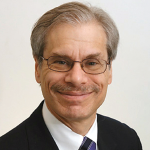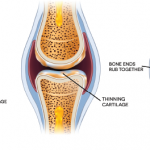By the time he had finished his residency, Dr. Felson notes that he was, indeed, much more attracted to the clinical than the laboratory science aspects of rheumatology. “Since I came from a social sciences background, it was more natural for me to go into epidemiology and public health and not bench science,” he explains. He headed to Boston University School of Medicine for a clinical and research fellowship.
Encouraged by his mentor, Robert F. (Bob) Meenan, MD, MPH, MBA, developer of the Arthritis Impact Measurement (AIM) scale, Dr. Felson began outreach to the investigators of the Framingham Heart Study. Started in 1948, the study had been tracking heart-disease measures for over three decades, but Meenan and Felson both realized there was an opportunity to begin to study arthritis in a community-based sample. This had not been done before, but many of the senior epidemiologists “had their doors open to me,” says Dr. Felson. His mentoring in epidemiology then began in earnest. “I relied very heavily on people from the methodology world [such as his long-time collaborator, statistician Jennifer J. Anderson, PhD] and not from the arthritis world,” he recalls. “I realized,” Dr. Felson now says, “that having expertise in epidemiologic methodologies would help provide insights into rheumatic disease problems.”
Investigators in the Framingham Study made useful suggestions as he struggled with designing measurements to assess arthritis in the cohort. The collaborations have yielded decades of insight into the prevalence, onset and progression of osteoarthritis (OA).1-3 The collaborations also created opportunities for his heart research colleagues. “They realized that they had been told by many heart-study participants that they were suffering from arthritis, so that was a big surprise to them as well,” he says.
It was Dr. Felson’s own experience with both clinical research and methodology that led him to encourage his trainees over the years to acquire expertise in both arenas. “A person pursuing research in rheumatology has to bring both pieces—the clinical and the methodological expertise—to the table to make the biggest contributions to help improve the lives of those with arthritis,” he asserts. His embrace of those twin components has yielded critical knowledge for the field.
“Dr. Felson’s scientific vision is critical to advancing our clinical knowledge of OA,” says Chhanda Dutta, PhD, chief of the clinical gerontology branch in the division of geriatrics and clinical gerontology at the National Institute on Aging (NIA) in Bethesda, Md. He is the only nonbiomedical researcher to have received the Henry J. Kunkel Young Investigator Award from the ACR.


